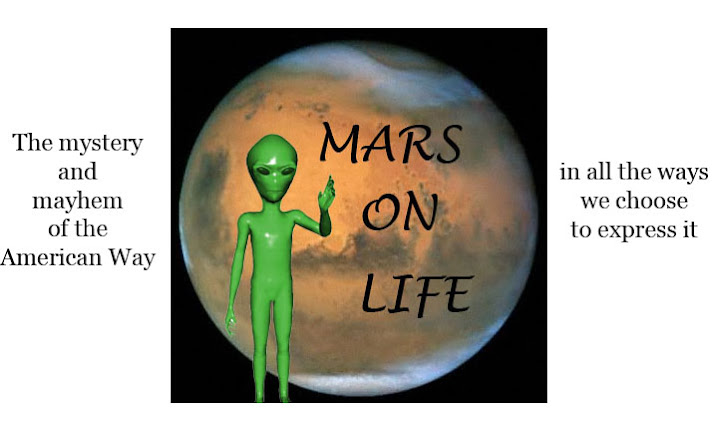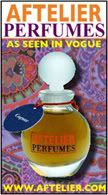
There was a time when Andy Warhol was at the center of a heated argument over the artistic merit of his work. Warhol's Brillo boxes and soup cans were not, in purely academic terms, fine art. They were Pop Art, the bridge between the classical and the cartoon, and they had disparate aims. The purists of the Manhattan art world rejected Warhol's celebrations of consumerism and his elevation of the mundane. The reticent Warhol liberated items of domestic Americana and gave them notice and narrative. These canned and boxed goods were proud symbols of automation while at the same time representing the drudgery inherent in their use. Even as he created perplexity in the art world, his paintings and silkscreens were not perplexing or full of drama and suspense. Turning the indistinguishable into something worthy of observation was a central theme of the earliest Pop Art, even as it was originally seen as antics.
Flowers, a 1964 painting based on hibiscus blossoms that was later serially produced as silkscreens, was created in Warhol's silver-foiled Factory. This, the Factory of The Chelsea Girls, Horse, and Poor Little Rich Girl, was on the fifth floor of 231 E. 47th Street in Midtown Manhattan. It is also Factory of the first of the Bond No. 9 Andy Warhol fragrances under license from the Andy Warhol Foundation for the Visual Arts. Consider this a bit of postmortem fragrant ghostwriting; Warhol was buried with a bottle of Estee Lauder's Beautiful. Silver Factory is a mood piece set in the Factory's recesses, an interior scent that juxtaposes Warhol's favorite violets with incense, resins, lavender, iris, and cedar. The overall aura of Silver Factory is that of a room without sunlight and a night without end, coming to rest only when the party is over--if it is ever over--and realized when the fluffiness of iris creates a cushion for the dissipating smoke and leather. The effect is like walking into a club that oozes the cool weariness of the hip and having to navigate by smell alone; a joss stick spins smoke, someone's classic aldehydic parfum has burned through to its base, the tannin of a leather jacket catches the air and holds it against its will. Let the incongruous, non-nocturnal violet stand in for Warhol's preternatural pallor and the metallic glint for his silvery wig; Silver Factory is a technical effect in the way Warhol's artwork was. It is also quietly ethnographic, creating its own tribal parfum from within the Pop culture of its walls.
Union Square, the second in the Warhol-themed line, is named for the location where Warhol moved his Factory in 1968. Rather than creating another cultural undertaking, Bond has made Union Square a simple, sensory comment on spring. In doing so, nose Stephen Nilsen brings his work closer to Warhol's avowed love of flowers. Where Silver Factory is allegorical and its floral almost an aberration, Union Square is literal; the scent is spring's seraphim bouquet.
Union Square is an environmental scent built around a central note of lily of the valley, a note that has as its benchmark fragrance Christian Dior's iconic Diorissimo. The difference between Silver Factory and Union Square is the difference between darkness and light. Union Square celebrates that moment when you catch the first scent of spring as it rounds the corner from winter, generally in the form of unseen flowers whose perfume seems at first heavier than air and then as light as a balloon. So bell-like is the lily of the valley that it transcends the sense of smell and becomes almost audible. These flowers never seem quite real, such is their surprise, and as they expand you note the sharp green stem where there had been only ice and the absence of winter's tedium in the sap of the birch.
Bond has issued a simple notation for Union Square: lily of the valley, green stem notes, freesia, birchwood, amber, and musk. These notes should serve only as an impression, a guide, and not a definitive roster. Union Square is genie-like, dancing around its white-floral bouquet at one moment and then highlighting the "silver cloud" musk accord as it duets with the striking verdant sharpness (Bond calls this greenery "uncorruptible"). Freesia works in concert with the lily of the valley rather than standing out singly and the stem notes give the scent a decided unisex quality; much like Bond's earlier Bleecker Street the presence of leaves or stems in the bouquet creates a snappy electricity and a much less demure texture. Any callowness inherent to lily of the valley is matured by means of modernity; the fragrance feels as if it has been aged in neo-Classicism. The flower's creamy sweetness is mellowed by the base amber to the point that one remembers that lily of of the valley often breaks ground while the ground has yet to fully release the full subterranean dampness of winter.
Warhol said that "another way to take up more space is with perfume." While this statement certainly rings true for anyone who has been caught in an elevator with someone wearing Amarige, what Warhol meant was that the projection of the self could be expanded by employing the sense of smell, as one's perfume was or could be larger than the physical body or emotional vibration. Yet one should not think of Union Square as fragrant clutter but rather as a metaphysical aura.
Union Square feels crisp and incisive and slightly authoritative; as Warhol was an arbiter of Pop Culture so Union Square becomes the new definition of what a modern lily of the valley scent can be. Bond has found the strength in the stem; Union Square has a fresh profile without pandering to any recent tendency of perfumery towards postmodernist abstraction. It is the spirit of spring as much as it is homage to the spirit of the artist and it is, in its own way, brilliantly silver.
Union Square is sold at Bond No. 9 and at Saks Fifth Avenue. The flacon is printed with the Flowers silkscreen made in the Union Square factory circa 1970. A special edition bottle with a Robert Lee Morris necklace and a collector's portfolio of ten Flower-series bottles are also available.
Monday, April 14, 2008
Wafting Warhol
Labels:
Bond No. 9 Union Square
Subscribe to:
Post Comments (Atom)









5 comments:
Awesome post, S. I couldn't agree with your interpretation more! Union Square is the very spirit of spring and yet it manages to transcend those other, springlike, scents. I knew I could count on you to make it sound as sophisticated/glamourous as it smells. K
Thanks, K.! Union Square is simply a delight and I think a real statement about what can be done with modern perfumery. It has a distinct joie de vivre and seems created with no more in mind than evocation (i. e., no pandering to the lowest common denominator of fragrance).
Bond's interpretations are always spot on!
I really like this post. It drew me out of myself and transported me someplace else. Because olfactory stimulation is very powerful for me, I'll be investigating this scent to see where it takes me.
You've enticed me so much that it's almost painful that I can't smell what you're describing (internet scent....should be on the techies' agenda me thinks...)...
I find a lot of modern scents quite sickly and heavy with the citrus notes so this sounds lovely....
I've always loved the way you write and you seem to sum up everything so perfectly! I think I might make a stop at a perfume counter the next time I hit the shops!
Post a Comment